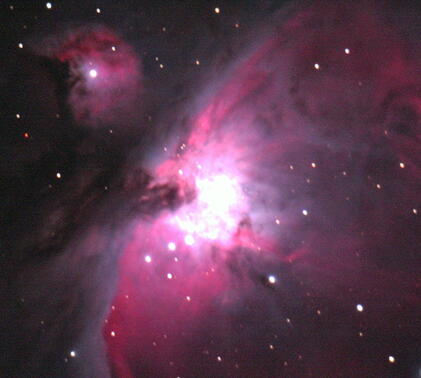
School Observatory
Upper Sixth Physics students took advantage of the clear skies over the weekend to make good use of the school observatory. After a quick introduction to the constellations of the January night sky, they observed the planets Venus and Mars through the telescope. These two planets currently appear close by each other in the south west evening sky, with Venus looking unmistakeably very bright to the naked eye and Mars, showing a pale red tint, a little to the left and above Venus. We then took a look at the Great Nebula in Orion, which is a enormous cloud of gas and dust around 1300 light-years away and some 25 to 40 light-years across, where hot new stars are being formed. A light-year is the distance that light travels through space in a year, which is a very, very long way! Through the telescope this nebula appears as a faint, but beautiful, extended silvery patch of light, but when imaged with our DSLR camera, set to a thirty second exposure, it yields its full glory.
Russell Spooner
Deputy Head


